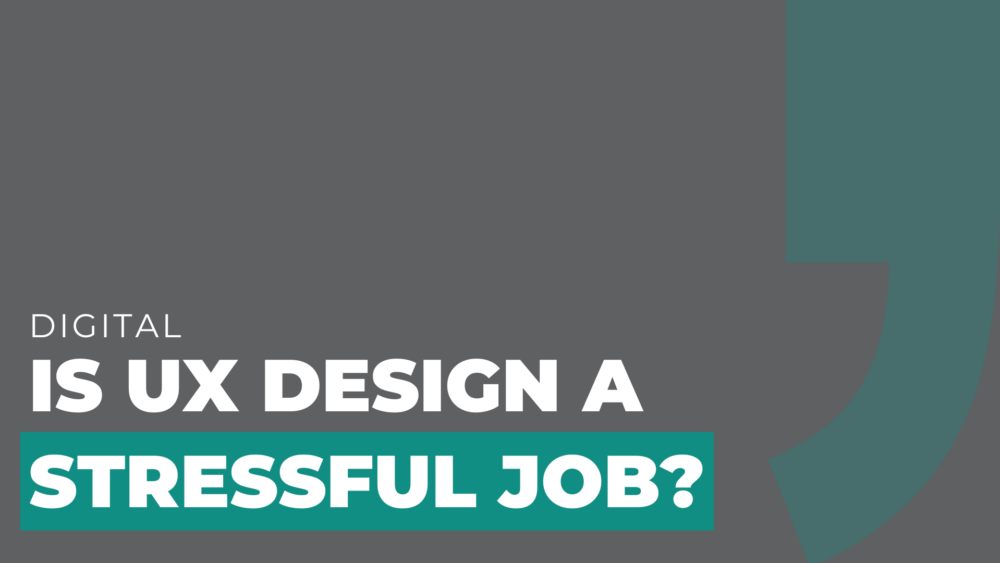If you’re considering a career in graphic design – specifically UX design, you might have heard mixed opinions about its stress levels.
Some claim it to be an exhilarating and fulfilling profession, while others highlight the intense pressure and demanding nature of the job.
Is UX design a stressful job?
Yes, it often can be.
Here our goal is to help you understand why UX design can be stressful, as well as provide tips on how to handle the stressors and avoid burnout.
Is UX Design Among the Least Stressful Jobs?
No, it’s not.
Contrary to popular belief, UX design is not typically classified as one of the least stressful jobs.
While it is true that UX designers often have the freedom to work remotely, set their own hours, and enjoy a creative outlet, the role comes with its fair share of challenges.
UX designers must constantly juggle multiple responsibilities, meet tight deadlines, and navigate complex user needs and expectations.
Why is UX Research Stressful?
One significant source of stress in UX design is the rigorous research process.
UX designers are tasked with understanding user behavior, conducting user interviews, analyzing data, and synthesizing findings into actionable insights.
This can be mentally taxing and time-consuming, especially when faced with conflicting data or a tight project timeline.
To illustrate the importance of UX research, let’s take an analogy.
Imagine you are building a bridge without conducting any geological surveys or soil tests.
It would be like playing a risky game of chance, not knowing if the foundation will hold up under real-world conditions.
Similarly, UX research acts as the foundation for creating user-centric designs, ensuring that products and services meet the needs and expectations of the target audience.
So while it can be very stressful, UX research is a very important part of the UX design process.
What are the Pros and Cons of UX Design?
While UX design can be stressful, it also offers numerous benefits – not just financial ones – and rewards.
Here are some pros and cons to consider:
Pros:
- Creative Outlet: UX design allows you to unleash your creativity and solve complex problems through innovative and user-friendly solutions.
- Positive Impact: By improving user experiences, you can make a meaningful impact on people’s lives and create products that bring joy and satisfaction.
- Constant Learning: UX design is an ever-evolving field, providing opportunities for continuous learning and growth.
Cons:
- Tight Deadlines: Meeting project timelines and delivering quality work within limited timeframes can be challenging and stressful.
- Balancing Stakeholder Expectations: UX designers often need to strike a delicate balance between user needs and business requirements, which can lead to conflicting priorities and added pressure.
- Feedback and Iteration: Receiving feedback and iterating on designs is an integral part of the UX design process, but it can sometimes be emotionally draining.
“I Hate UX Design”: What UX Design Burnout Looks Like
Burnout is a real concern in the UX design industry.
Long hours, constant pressure, and high expectations can take a toll on mental and physical well-being.
Signs of UX design burnout may include:
- Feeling constantly exhausted and drained, both mentally and physically.
- Experiencing a lack of motivation and passion for your work.
- Becoming irritable or easily frustrated with colleagues or clients.
- Struggling to maintain a healthy work-life balance.
- Feeling overwhelmed by the ever-growing demand for new skills and knowledge in the field.
The first thing you should do is to acknowledge your feelings and not dismiss them.
It’s critical to understand that burnout is a legitimate issue that affects many professionals, and it’s nothing to be ashamed of.
To tackle burnout, it’s essential to set clear work boundaries, prioritize self-care, seek support from colleagues or professionals when needed, and take regular breaks to engage in non-work related activities that you enjoy.
All of these strategies can help any graphic designer remain positive and proactive throughout their career.
Ultimately, good self-care practices will help you become the best designer you can be – and navigate the challenges of UX design without burning out.
Remember, taking care of yourself is just as important as creating exceptional user experiences.


Comments are closed.